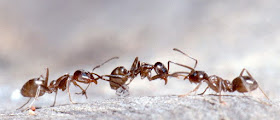The peafowl is a bird that is most commonly known as the peacock. These kinds of birds are most recognizable because of their brightly colored feathers. Of course, just as with most birds, the male of the species is the one that has bright feathers, and the female is brown and white. When the male peafowl is trying to impress a female for mating, he will fan out his feathers in a beautiful display. The peafowl can be found in areas of Pakistan and India. These birds were also located in Bangladesh; however, they are now thought to be extinct in this area of the world.
The peafowl is an omnivore, and they forage for their food. In the forests of India, the birds eat insects, grains, berries, and small reptiles and mammals. In order to reproduce, the males will set up territories, and the females will wander through these territories until they find a male that they would like to mate with. Once the mating is over, the female is left to care for the young. The female will make a nest and lay anywhere between three and six eggs. Once the chicks hatch from the eggs, they follow their mother in order to learn how to forage and care for themselves.




























.jpg)























